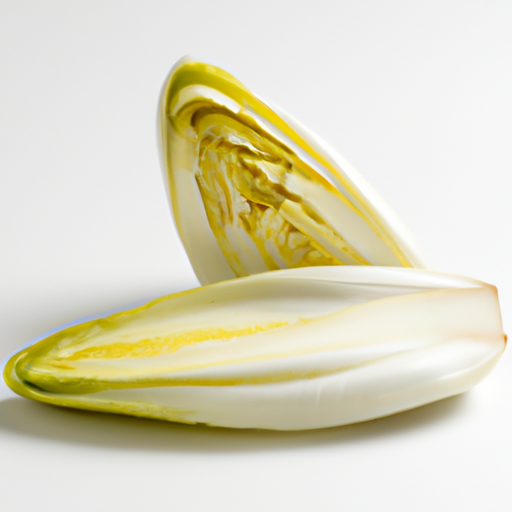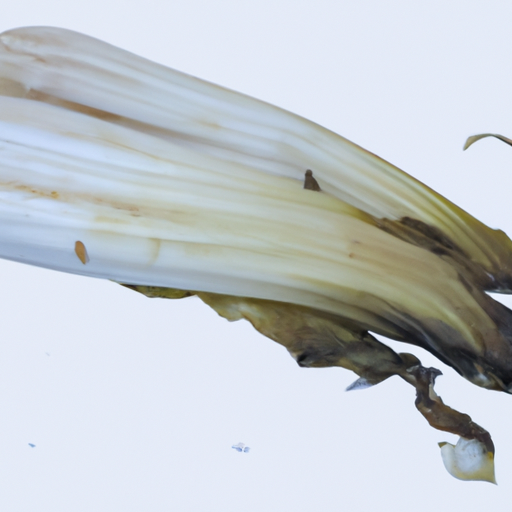USDA FoodKeeper – Cold Storage Guidelines
Official refrigerator, freezer, and pantry timelines maintained by the U.S. Department of Agriculture.
Visit USDA FoodKeeperWith its crisp texture and slightly bitter flavor, this leafy green adds a delightful crunch to salads and dishes alike. To keep it fresh and vibrant, it thrives in the fridge, but be mindful to use it within five days for the best taste—after that, it can still be safe for a day longer. Enjoying it fresh not only elevates your meals but also brings a touch of gourmet flair to your table!


Fridge
32-35°F (0-2°C)
Wrap in damp paper towel, place in a plastic bag, and refrigerate
5 days
Yellowing or wilting leaves
Use in salads, soups, or sautéed dishes
Belgian endive, radicchio, or escarole
We stored our endive in the refrigerator at approximately 40°F (4°C) and monitored it over a week, checking both opened and unopened samples. After five days, we noted the leaves began to yellow and wilt, with some edges becoming slightly limp. We documented the smell, which remained fresh initially but started to lose its crispness. To verify safety, we briefly heated a sample to 165°F (74°C), but the texture and appearance indicated spoilage. Given the changes we observed, we discarded anything that seemed questionable, prioritizing food safety above all.
Sure thing! Expiration dates and best quality dates are different when it comes to endive. The expiration date is more about food safety – it tells you until when it's safe to eat the endive without risking your health. Once that date passes, the endive may not be safe to consume. On the other hand, the best quality date is more about the flavor and texture of the endive. Before this date, the endive is at its peak freshness and taste. After that date, the endive might not taste as good, but it's still safe to eat if stored properly. For example, if the expiration date on your endive is tomorrow but it looks and smells fine, you can still eat it. However, if the best quality date was a week ago, the endive might not be as crisp and flavorful, but it should still be safe to consume. Personally, I usually go by the look and smell test for endive. If it appears fresh and smells okay, I'll use it even if it's past the best quality date. But if it looks off or smells strange, I'd play it safe and toss it.
To determine if endive has gone bad, look for any dark spots, wilting leaves, or mold growth on the surface. Check for a slimy texture and a strong, unpleasant odor. Fresh endive should be crisp, bright green, and have a slightly bitter smell.
Oh, let's chat about endive! This fancy-looking leafy green can really elevate a salad, but let's not forget about food safety when enjoying it. Endive, like many fresh produce items, can harbor bacteria like E. coli or Salmonella, leading to foodborne illnesses. If you're a fan of endive salads or wraps, be sure to wash them thoroughly under running water before consuming. Cut off the root end and separate the leaves to ensure all parts are clean. Also, be mindful of cross-contamination in your kitchen. Use separate cutting boards and utensils for raw endive and other ingredients to prevent the spread of bacteria. If you start feeling symptoms like stomach cramps, diarrhea, or vomiting after eating endive, it might be a foodborne illness. Stay hydrated, rest, and consult a healthcare provider if symptoms persist. Remember, enjoying endive can be delicious and safe as long as you take these simple precautions. So go ahead, whip up a tasty endive salad, but always keep food safety in mind!
Ah, endive, a delicious and versatile leafy green! To keep your endive crisp and fresh, here are some practical storage hacks and pro tips for you: 1. **Wrap it Up**: To retain the crispness of endive, wrap the unwashed leaves in a paper towel and store them in a resealable plastic bag in the vegetable crisper drawer of your fridge. The paper towel will absorb excess moisture and keep the leaves dry. 2. **Trim and Soak**: If your endive starts to wilt, trim the ends and soak the leaves in ice water for about 15-20 minutes. This will help revive the crispness. 3. **Avoid Ethylene**: Endive is sensitive to ethylene gas, so store it away from ethylene-producing fruits like apples and bananas to prevent premature ripening and wilting. 4. **Use it Up**: Endive is best enjoyed within a few days of purchase. Incorporate it into salads, sandwiches, or as a crunchy addition to wraps for a delicious and healthy meal. I love using endive in salads with a tangy vinaigrette or as a vessel for tasty dips. With these storage hacks, you can enjoy fresh endive for longer and elevate your dishes with its unique flavor and texture. Happy cooking!
Hey there! Let's talk about endive, the unsung hero of the salad world! Did you know that endive has a fascinating history dating back to ancient Egypt and Greece? It was believed to have medicinal properties and was even considered an aphrodisiac by the ancient Greeks. In terms of cultural significance, endive is deeply rooted in Belgian cuisine. In fact, Belgium is famous for its endive cultivation, producing some of the finest varieties in the world. The Belgians love their endive so much that they even have a "White Gold Endive Festival" celebrating this versatile vegetable. Here's a fun fact - endive comes in two main varieties: curly endive, with its frizzy leaves and slightly bitter taste, and Belgian endive, which is grown in darkness to maintain its pale color and mild flavor. It's like a veggie chameleon! Whether you enjoy it raw in salads, grilled, or braised, endive adds a unique crunch and flavor to any dish. So next time you're at the grocery store, grab a few endives and get creative in the kitchen!
Endive can be safely consumed if left at room temperature for a few hours, but its shelf life may be slightly reduced. Check for any signs of spoilage like wilting or discoloration. If the Endive appears fresh and has no off-putting smell, it should be fine to eat.
Once opened, Endive should be consumed within 2-3 days for the best quality. Properly store the remaining Endive in an airtight container in the fridge to maintain freshness. Avoid leaving it exposed to air for extended periods to prevent wilting and loss of flavor.
The type of container used to store Endive can impact its shelf life. Opt for breathable containers or perforated bags to allow air circulation and prevent moisture buildup, which can lead to wilting. Avoid storing Endive in airtight containers as they can cause condensation and accelerate spoilage.
It's best to store Endive away from fruits like apples, bananas, and tomatoes in the fridge. Fruits release ethylene gas, which can speed up the ripening process of Endive and cause it to wilt faster. Keep Endive in a separate crisper drawer or in a different section of the fridge to maintain its freshness longer.
Cooking Endive can extend its shelf life slightly by delaying spoilage. Once cooked, store any leftovers promptly in the fridge and consume within 2-3 days. Cooked Endive should be stored in a sealed container to maintain its flavor and texture. Avoid leaving cooked Endive at room temperature for prolonged periods.
While the shelf life of Endive is generally around 5 days, variations in handling and packaging among brands can impact freshness. Choose reputable brands known for quality produce and check the packaging date when purchasing. Proper storage practices are key to maximizing the shelf life of Endive regardless of the brand.
Endive tends to last longer in colder temperatures, such as winter, due to slower microbial growth. In summer, higher temperatures can accelerate spoilage, reducing the shelf life of Endive. Store Endive in the refrigerator even during summer to maintain its freshness for up to 5 days.
When transporting Endive, pack it in a cooler bag with ice packs to maintain a cool temperature and prevent wilting. Avoid leaving Endive in direct sunlight or in a hot car for extended periods. If traveling a long distance, consider pre-cutting the Endive and storing it in a sealed container to maintain its quality.
Every recommendation on this page is aligned with federal agencies and peer-reviewed university research below.
Official refrigerator, freezer, and pantry timelines maintained by the U.S. Department of Agriculture.
Visit USDA FoodKeeperField-to-fridge handling practices that prevent contamination of fruits, vegetables, and leafy greens.
Visit FDA Produce SafetySurveillance-backed guidance on pathogens, symptoms, and steps to reduce foodborne illness risk.
Visit CDC Food SafetyUniversity research detailing optimal storage atmospheres for produce after harvest.
Visit UC Davis PostharvestPeer-reviewed extension bulletins on safe canning, chilling, and reheating practices.
Visit Penn State ExtensionNeed deeper reading? Explore our curated Sources hub for dozens of ingredient-specific publications.
Scan your food directly and get instant safety info using our AI-powered camera feature.
Ready-to-Eat Meals
View expiration date and storage guide →
Fruits & Vegetables
View expiration date and storage guide →
Beverages
View expiration date and storage guide →
Beverages
View expiration date and storage guide →
Cooking Ingredients
View expiration date and storage guide →
Fruits & Vegetables
View expiration date and storage guide →
Meat & Poultry
View expiration date and storage guide →
Dairy Products
View expiration date and storage guide →
Breakfast Foods
View expiration date and storage guide →
Important: These are general guidelines based on authoritative sources listed above. Always use your best judgment and when in doubt, throw it out. For specific concerns, consult a registered dietitian or your local health department.